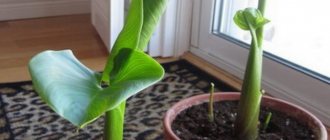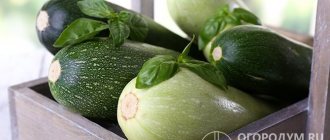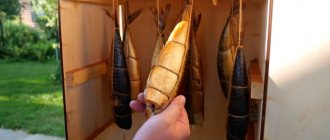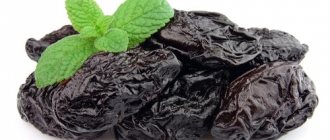Chrysanthemum blossoms are like a bright reflection of summer before a long winter. A bright palette of colors and a pleasant aroma unusually decorate the fading autumn nature. But frost will begin soon. How to preserve chrysanthemums in winter if they grow in open ground?
First, you need to carry out a simple procedure for preparing plants for the cold dormant period. And then decide on their winter storage. There are 2 options. For the winter, the bushes of autumn beauties are either left on the site in open ground, or dug up and moved to a frost-free place.
You need to think about the issue of winter storage of chrysanthemums at the beginning of autumn
Storage conditions and preparation of chrysanthemums
You can store chrysanthemums at your dacha for the winter in a cool place with a temperature of about 8 °C. Humidity should be kept at no more than 80%; flowers require good ventilation, but without drafts.
To preserve chrysanthemums, they must be carefully prepared for the winter:
- Add fertilizer. With the onset of autumn, flowers are fertilized with potassium and phosphorus to increase endurance and for abundant budding next year.
- Treat against fungi. In September, plants are carefully inspected for diseases and pests. If spots and rotten areas are visible on the leaves and shoots, the affected areas should be removed and the bush should be sprayed with Bordeaux mixture or Fundazol.
- Perform trimming. With the onset of the first frost, all weak, broken, too old and dried branches are removed from the crop. Healthy shoots are shortened to 10-15 cm. Timely pruning helps direct nutrients to the roots of the plant and increase its winter hardiness.
After pruning, it is necessary to treat the cuts with crushed coal or wood ash. This will prevent tissue infection and speed up healing.
Before harvesting chrysanthemums for storage, it is recommended to label them by variety so as not to confuse them in the spring.
What varieties need to be dug up?
Frost resistance of varietal chrysanthemums can vary greatly. Only the hardiest and strongest varieties are allowed to be left in the ground for the winter, especially in the northern regions.
It is recommended to dig up in the fall and clean indoors:
- chrysanthemums of the Multiflora group;
- twig varieties;
- large-flowered varieties.
Gardeners note that plants with the largest and brightest buds usually tolerate wintering in the ground the worst and require special care.
Spring planting of chrysanthemum shoots
Gardeners often encounter this situation: a planted chrysanthemum blooms beautifully for two or three years, causing general admiration, and then suddenly disappears even in a not very severe winter. Or, on the periphery of the bush, a single dead sprout survives, and the center of the bush turns out to be bare...
The reason for the death of the bush: regular spring planting of numerous chrysanthemum shoots was not carried out. The fact is that the chrysanthemum grows due to horizontal offspring, which are located superficially. Therefore, for successful overwintering of chrysanthemums, it is necessary to mulch the bushes in the fall. Usually, humus or peat is used for this, and in their absence, you can simply hill up the chrysanthemum bush with garden soil.
In early spring, when the regrown shoots of chrysanthemums reach a height of 5-7 cm, I dig up the entire mulched bush. I shake off the soil and break out rooted shoots with pieces of rhizome from the mother bush. And the central part of the old bush, which bloomed in the fall, is thrown away. I plant the resulting young plants (1-2 pieces each, at a distance of 15-20 cm) in the same place, but somewhat deeper.
By the beginning of autumn flowering, each such frail sprout will form a chic chrysanthemum bush, pleasing to the eye.
Where and how to store chrysanthemums in winter at home
You can store outdoor chrysanthemums in winter in a basement, cellar, unheated greenhouse, on a glazed balcony or loggia. It is important to maintain a comfortable temperature for the culture above 0 °C.
How to store dug up chrysanthemums from the street in a cellar, basement or underground in winter
A cool cellar is one of the best options for storing chrysanthemums in winter. The temperature in it should be at the level of 5 ° C, it is also important to ensure high-quality ventilation in the room. The basement is first inspected and, if necessary, treated to remove mold and mildew.
You can put plants in the cellar to preserve them until spring according to the following scheme:
- In late autumn, with the onset of the first frost, the flowers are carefully dug out of the ground.
- Leave the bushes in the fresh air for several days to dry out.
- If necessary, treat with fungicides against diseases and pests.
- The plants are transferred to the basement and planted in pots with a substrate or placed in a wooden or plastic box as close to each other as possible.
- Sprinkle a layer of dry earth on top.
The culture in the cellar does not require special care during the winter. You just need to inspect it once a month so as not to miss the appearance of mold. If a fungus occurs, the affected plants are immediately thrown away, and the remaining ones are treated with fungicidal solutions.
Attention! If the roots of the bushes become limp and dry in winter, you need to spray them with water and take care to increase the general level of humidity in the basement.
If a chrysanthemum has sprouted in the basement in winter, they can be removed while they are still weak
How to store chrysanthemums in an apartment or on a balcony in winter
You can preserve bush chrysanthemums in a city apartment in winter on a glassed-in balcony or loggia. Usually the temperature in such places is kept within 0-5 °C, as a result the seedlings do not freeze out, but also do not start growing ahead of time.
You can transfer the culture to the balcony using the following algorithm:
- In late autumn, with the arrival of cold weather, the bushes are pruned and dug out of the flowerbed.
- Chrysanthemums are transferred to wide pots filled with a substrate of turf soil, sand and humus.
- Place the containers in a shaded corner of the glazed balcony away from drafts.
- Store plants at temperatures up to 8 degrees during the winter.
From time to time, the culture in pots can be moistened. This is done no more often than once a month, so as not to disturb the natural dormancy of the plants.
Chrysanthemums are not stored on an open balcony, as they may die from frost
In the absence of a balcony or loggia, it is quite difficult to preserve chrysanthemum seedlings in an apartment until spring. But you can move the garden bushes into spacious tubs and put them in the pantry or put them on a cold windowsill. It is important to place the culture away from heating devices, lightly moisten the soil in the pots from time to time and protect the plant from bright sunlight.
Preservation by cuttings
If chrysanthemums were purchased in late autumn and it is not possible to winter them in a suitable room, then you can leave the flowers in the apartment. However, there is no guarantee of their safety until spring (even with lighting), so cuttings are used. Plants in pots are placed on the windowsill closer to the window, away from heating. Several cuttings (3-4 cm long) are plucked from the leaf axils. For their rooting, prepare small cups filled with nutritious soil.
The planting technique is simple: a depression is made in the middle of the container, sand is poured into it, moistened, then the cutting is immersed (about 1 cm). The glass is tied with a plastic bag, but loosely, so that ventilation remains. In such a greenhouse, a chrysanthemum cutting usually “sits” for 1-2 months, and then begins to grow. As soon as the roots become visible through the walls of the container or the first leaves appear, the cover is removed. Buds may form, but they are removed immediately. By spring, healthy planting material will be ready.
Chrysanthemums amaze with their varietal diversity, brightness, and original forms. But many are afraid to grow them precisely because of the risk of freezing. Fortunately, it is not difficult to preserve chrysanthemum bushes until the next season, even if there is no suitable premises.
Where and how to properly store chrysanthemums in open ground in winter
When growing hardy varieties, you can store chrysanthemums in the garden for the winter. At the same time, in any case, the crop requires high-quality insulation, otherwise it will die in severe frosts.
How to preserve perennial chrysanthemums in winter without digging them up
In the southern regions and the Moscow region, hardy varieties are allowed to be left in the flowerbed, especially if the winter is expected to be mild and snowy. A shelter for plants is constructed as follows:
- In October, flowers are cut to only 2-5 cm, removing all weak and diseased shoots.
- The flowerbed is cleared of plant debris, taken to the far corner of the garden and immediately burned.
- Shortened bushes are mulched with humus, peat or sawdust in a dense layer at least 10 cm thick.
- With the onset of cold weather, spruce spruce branches are thrown over the flowerbed to protect the plants from frost and preserve them until spring.
After precipitation falls, snowdrifts are built over the bushes. Snow serves as a good natural insulator, and in the spring it actively melts and provides plants with the necessary moisture.
If the winter is expected to be very cold, you can build a frame shelter for the flowers from boards or metal arches
It is necessary to open the bushes with the onset of the first thaw. The covering material is removed gradually so that the plants do not suffer from sudden changes in conditions.
How to preserve garden chrysanthemums in a greenhouse in winter
A video on how to preserve chrysanthemums in a greenhouse in winter recommends replanting bushes into it at the end of summer so that they have time to take root properly. Further preparation of plants is carried out as follows:
- After the onset of frost, the stems are cut to 2 cm.
- Sprinkle the remaining hemp with dry humus in a layer of about 25 cm.
- Cover the bushes with lutrasil or spunbond.
In an unheated greenhouse, ornamental plants are protected mainly from the wind in winter. However, the temperature inside the structure can still drop to negative values, so high-quality insulation of the crop is strictly necessary.
In a heated greenhouse with a temperature of 5 °C, chrysanthemums can overwinter with minimal or no shelter
About buying chrysanthemums
Chrysanthemums in autumn are always the focus of gardeners' attention. Planting material for flowering chrysanthemums is purchased in various places. Many times I noticed that at the market there is always a crowd of interested people near the sellers of chrysanthemums. Someone buys flowering seedlings. Someone consults on cultivation issues, recalling their bitter experience. And some simply admire the beautiful flowers...
Having quite a few varieties of chrysanthemums, I myself constantly linger at the counters with flowering specimens, looking out for new items. After all, once you “get sick” of the thirst for collecting chrysanthemums, then it is difficult to give up the desire to regularly replenish your collection!
So, you buy a gorgeous blooming chrysanthemum bush in October. Good luck if it overwinters well in the garden. But as soon as the chrysanthemum is about to bloom next fall, frost strikes, and all the long-awaited beauty disappears. And this sad picture repeats itself from year to year...
The reason for this situation: a late-flowering chrysanthemum variety was purchased, grown in a greenhouse or hothouse. As a rule, flowering chrysanthemum seedlings with roots are sold by people who grow cut flowers. I myself fell for this “bait” several times.
How to avoid such a problem? If you buy blooming chrysanthemums on the market, then no later than September. In this case, the plant should already be blooming profusely.
Features of storing chrysanthemums in different regions
How to preserve chrysanthemum roots until spring largely depends on the growing region. It is necessary to take into account the climatic features of the area and the weather in a particular season.
How to preserve chrysanthemums in winter in Siberia
In Siberia, winters are particularly harsh, and temperatures can drop to -35 °C or more. Therefore, ornamental plants are rarely left in the ground - they are usually dug up and put in the cellar or on the balcony. You can preserve bushes at a temperature of about 5 ° C and a humidity level of around 75-80%.
Attention! It is not recommended to keep chrysanthemums in winter in Siberia in complete darkness. It is better to provide the bushes with diffused, dim lighting.
How to preserve chrysanthemums in winter in the Moscow region
In the Moscow region, flowers can be left in the ground for the winter if desired, if the weather forecast does not promise extreme cold. In this case, it is imperative to organize a reliable shelter for ornamental bushes.
With the onset of light frosts down to -7 ° C, the plants are covered with a dense layer of mulch and insulated with spruce branches. The procedure should be carried out in dry and clear weather. It is impossible to cover the bushes in the rain, as they can become damaged and suffer from fungal diseases.
How to preserve chrysanthemums in winter in the Urals
In the southern regions of the Urals, you can leave flowers in the ground for the winter. A frame shelter is built for the plants and insulated with organic material and spruce branches, and after precipitation falls they are additionally covered with snow. In the northern Urals, it is better to dig up flowers from a flowerbed and move them to the basement for the winter, having previously trimmed them to fit the stump.
How to preserve chrysanthemums in winter in the middle zone
In the middle zone, flowers are usually left in the garden for the winter, having built a reliable frame shelter for them. The insulation procedure is carried out at the end of October or at the beginning of November, after light frosts have established.
In the middle zone, it is recommended to dig the bushes out of the ground and move them to the basement if the winter is expected to have little snow
Which varieties can be left in the ground and which need to be dug up?
Let us remind you that chrysanthemums can be preserved in winter in two ways:
- cover and leave in open ground;
- dig up and move to a warmer place.
The choice of method depends on the variety of chrysanthemums and the climatic conditions of the region.
Overwinter in the ground:
- many Korean chrysanthemums, among them - Umka, Sister Alyonushka, Oktyabrina, Amber, Lilac Fog, Umka, Korean White, Lipstick, Stranger, Vologda Lace;
- small-flowered chrysanthemums “oak”;
- many chrysanthemums are multiflora.
Korean chrysanthemum “Umka” is a frost-resistant variety that overwinters well under a small shelter even in the middle zone
The following must be dug up and stored indoors:
- Indian chrysanthemums;
- large double and needle-shaped varieties grown for cutting.
Indian chrysanthemum "Anastasia" - grown for cutting, does not overwinter in open ground
Do I need to dig up a specific chrysanthemum variety for the winter? This issue is often resolved experimentally. If you decide to leave a new variety to winter in the exhaust zone, first cut and root cuttings from it. Then, even if the bush freezes, you will have living planting material.
Also, when deciding on the winter maintenance of chrysanthemums, it should be taken into account that:
- Young chrysanthemums, 1-3 years old, winter best in open ground. Old plants often do not survive winter even with good shelter. Therefore, it is recommended to regularly divide and renew the bushes.
- The main enemy of wintering chrysanthemums is dampness. This culture tends to freeze not from severe frosts, but from damping out and getting wet. Therefore, the root system of the plant should be in dry conditions in winter. The chances of a successful winter in the OG increase for those chrysanthemums that are planted on raised beds, where water does not stagnate when the weather gets warmer.
- In regions with little snow in winters, high humidity and sharp transitions from frost to thaw, even frost-resistant varieties have a risk of root freezing and rot damage. In this case, it is not advisable to leave the plants in open ground.
Recommendations and common mistakes
When preparing for winter, you need to take into account important rules to avoid serious mistakes:
- do not feed the bushes with the onset of autumn with mixtures containing nitrogen;
- carry out pruning only after the chrysanthemums have bloomed and begin to fade naturally;
- dig bushes out of the ground after low negative temperatures have established.
If you start preparing for winter too early, it will harm the ornamental crop. Chrysanthemums removed from the soil during the active growing season will be vulnerable to fungi and infections and are likely to die.
What is a spherical chrysanthemum?
Neat balls of chrysanthemums with small bright flowers are a group of Korean small-flowered spherical chrysanthemums Multiflora. It is representatives of this group who decorate summer cottages and city flower beds in the fall.
ADVANTAGES of Korean spherical chrysanthemums Multiflora:
- spherical shape of the bush: height and diameter from 20 cm (short varieties) to 50-70 cm (tall varieties),
- VERY abundant flowering,
- bright and rich color of flowers,
- average winter hardiness.
MINUSES of Korean spherical chrysanthemums Multiflora:
- all chrysanthemums are young,
- do not winter well in cold regions,
- They do not winter well in apartment conditions.
When to send a chrysanthemum to sleep
The remaining flowers have faded, the bush becomes dull, the leaves become a little lethargic. When there are no buds left on the plant, it’s time to “put” the chrysanthemum to sleep.
In the modern world, the calendar dates have changed, which let you know when chrysanthemums bloom. In October you can buy blooming chrysanthemums with large flowers, but they are late bloomers. The upper buds of such chrysanthemums will open in November, and flowering will end in December-January. However, when such a chrysanthemum is “helped” to bloom early, the dormant stage may well begin in November.
Korean chrysanthemums bloom for quite a long time in open soil, in accordance with the period that corresponds to this variety. Chrysanthemums “Malchish-Kibalchish” bloom very early. Their flowers begin to open in July. August marks the peak of flowering of chrysanthemums such as “First Snow”. Chrysanthemums “Altgold” and “Snow White” bloom later than everyone else (until the frost).
If plants are grown at home, the timing of when they bloom will shift. If you organize the correct conditions for keeping potted chrysanthemums in the house, they can bloom for up to 2 months. November-December is a time of rest.
Wintering in a flowerbed
Cold-resistant garden chrysanthemums even in open ground will not suffer from frost in winter if they are properly prepared in the fall (without digging them up). After the first frost, the stems are cut to 15 cm (young shoots do not need to be touched). It is useful to treat the stumps and the soil around them with a solution of copper sulfate (10 g per 0.5 liter of water) or Bordeaux mixture - this will prevent fungal diseases for the next season. Then the bush hills up slightly. It is important that there are no grooves left where water accumulates.
In the second stage, dry mulch is poured (a layer of 40-50 cm). It is desirable that the mixture contains hard elements (cones, pine needles), which add volume and provide ventilation. You can lay spruce branches or a couple of layers of covering material on top - it will provide air exchange and protect from precipitation.
Some people, after the first frost kills the flowers, simply cut the chrysanthemums in the garden and cover them with spruce branches. It should be noted that pine needles have disinfectant properties, so such a shelter will not provoke a fungal disease.
Features of winter care
To achieve good flowering, you can use bioregulators and stimulants. These include Buton and Zikron. As the shrub grows, it is necessary to regularly pluck off old foliage, because it is this that is susceptible to disease. Tall shoots must be tied up to prevent wind or rain from knocking them to the ground. For the winter, you can leave the chrysanthemum in a special trench where humus is poured. First, earth is poured into such a trench, and sawdust is poured on top. Young plants tolerate winter favorably in a cool room, but at positive temperatures. You should also pinch the shoots so that they do not grow too much.
How to quickly revive a wilted bouquet?
Even if all the conditions for delaying the wilting of chrysanthemums have been met, the process of flower death is still inevitable. However, you can try to keep this beauty next to you for a couple more days and refresh the chrysanthemums.
- Dip the flowers in cold water, hold for no longer than 2 minutes .
- After this, immediately immerse the chrysanthemum stems in hot water.
- Trim rotting sections.
- Place the bouquet in water at room temperature and place the vase in conditions that are comfortable for chrysanthemums.
How to care for chrysanthemums during flowering?
Give the chrysanthemum maximum attention so that it lives at home for more than one year. Remember that this is a garden plant, the life of which began in a greenhouse with special temperature and light conditions.
These flowers are grown using retardants, which slow down the growth of stems, speed up the flowering process and change the physiology of the chrysanthemum.
Remember this and do not brew teas from chrysanthemum petals that are purchased in stores and garden centers.
If you grow a chrysanthemum yourself from a seed, cutting or young shoot, it will be much easier for the plant to get used to living at home. The smell of such flowers is much more pleasant and stronger than those bought in a store.
When a chrysanthemum is taken out of a purchased pot, it is sometimes discovered that it is not one plant, but three or four.© Elena Vetrova
Possible problems: diseases and pests
It is more advisable to constantly carry out prevention against diseases and damage to leaves by insects. If the year turns out to be dry, then it is important to water the chrysanthemum well. Wet soil is a bad environment for the development of pests that love this plant so much. In any season of the year, there is a sufficient number of pathogens in the soil, therefore, after rains, complex treatment should be carried out every time. Quadris or Previkur are perfect for this. But Fitosporin helps cope with root rot. There are also many insects whose diet includes chrysanthemums. Especially notable among them are aphids, snails, mites, caterpillars and thrips. Plantings should be inspected every day, because one caterpillar can eat several buds during the night. To combat this scourge, Aktara, Ratibor and Iskra are used.
Outdoor storage
If there is no suitable room, then chrysanthemums can be wintered safely outside. To do this, dig a trench measuring 50*50 or 70*70 cm. The rhizomes are placed tightly on the bottom (stems up), the voids are filled with peat or light soil.
As soon as the temperature reaches sub-zero temperatures, they begin to cover the chrysanthemums.
- The first thin layer should create volume and provide ventilation. Fragments of slate, light reinforcement, and trimming corners are suitable. It is not advisable to use branches to avoid the development of fungus on chrysanthemums.
- The second layer (about 0.5 m) is warming and absorbent. These can be dry leaves (without scab and fungus) or chopped straw.
- The third layer protects the rhizomes of chrysanthemums from precipitation and damping off. A piece of thick film or roofing felt will do. The material is secured along the edges.
In such grooves, chrysanthemums successfully survive until spring. The downside is the inability to control the condition of the rhizomes.
Prudent summer residents prepare natural covering material throughout the season. This could be grass cut by a lawn mower, straw, pine litter, pine cones, sawdust. All materials are dried and stored until winter.
Some owners of glass or polycarbonate greenhouses use them to store chrysanthemums in winter. The bushes are dug up before frost and transplanted into a greenhouse, where they continue to grow and bloom. After the temperature reaches sub-zero temperatures (about 5-7°C), the stems of chrysanthemums in the greenhouse are trimmed, the bushes are covered with dry mulch and covered with lutrasil. In the spring, they begin to grow quickly and are transferred to the flowerbed already strong.
Common spider mite
It can reproduce quickly and spread even faster. At a temperature of 20 degrees Celsius and air humidity of 35 percent, mites develop at lightning speed. It takes only a few days for an adult tick to develop from an egg.
The tick sleeps when the temperature is less than 12 degrees Celsius. The contents of cells are their nutrition. The bottom of the leaves is subject to damage. The mite sucks the sap of plants. You can see a thin web. The leaves begin to discolor, turn yellow, acquiring a “marble tint.” They can quickly curl and fall off. The tick is a carrier of infections and gray mold spores.
Control measures: spray with infusion of onion peels and garlic; treat with soap solutions; resort to the use of chemicals. Spray the chrysanthemum with insecticides.











